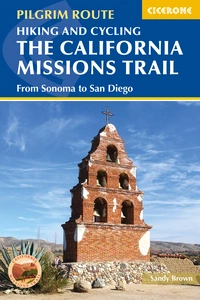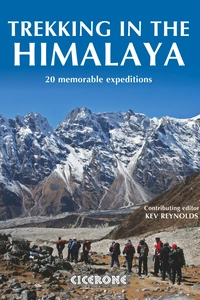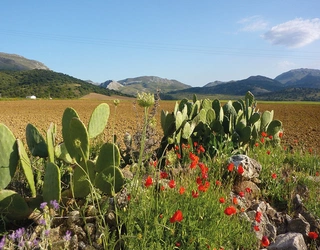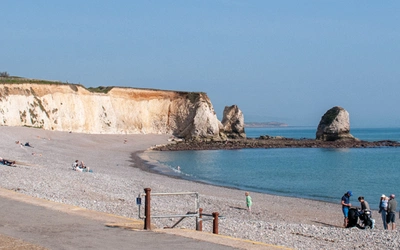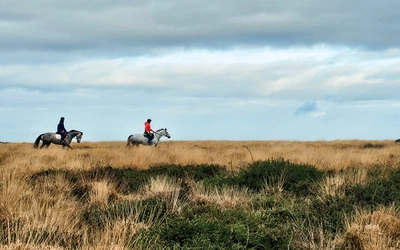Three Seasons in Three Days – a trek in Spain’s Sierra Nevada
No matter how many times you climb mountains they can still spring surprises. Is this one of the reasons we keep returning? A simple three-day trek crossing Spain’s Sierra Nevada mountains one November turned into one such instance for Cicerone author Richard Hartley and his companions.
My brother had decided to make his first visit to see me at my home in Lanjarón. He was keen to do a three-day high altitude trek crossing the Sierra Nevada staying overnight in unguarded refuges/shelters. Four friends from the USA, Spain and UK were to join us.
I think my brother had in his mind a vision of walking in t-shirts and shorts under the hot sun. Well, it is southern Spain after all… Right?
Day 1 - Winter
Unfortunately after months of warm, dry and settled weather on the first day of his trek bad weather had decided to arrive. November can be after all a changeable month and it is when the first major snowfalls of the season can arrive. Sensibly, we decided to cut short our initial plans and settle for a simple walk from the Hoya de la Mora, on the northern slopes of Veleta above the Sierra Nevada ski area, over Veleta itself (3394m) to the Refugio de Carihuela at 3200m. A modest plan.
The predicted bad weather of course arrived slightly earlier than forecast so we started off from the Hoya de la Mora under darkening skies and evolving hill mist. Fortunately this area is well known to me as I have been up here in bad weather many times since I first arrived in the Sierras in 2002. The lay of the land becomes more familiar with every passing. We slowly ascended through the deserted ski pistes and onto the gray, open slopes above.
Now it became full whiteout conditions with a bitterly cold northerly wind biting and tugging at our clothing. No part of the face or hands could be exposed for long. As we neared our first target, the high ski road near “Los Posiciones” on the northern shoulder of Veleta at 3100m, the altitude also began to take a toll.
With conditions deteriorating we shuffled along the high ski road, wisely opting to give our ascent of Veleta a miss. Although the road has easy gradients we had knee-deep snowdrifts to impede our progress. The wind whipped the spindrift and hurtled it into our faces. Waterproof jackets and pants began to turn white as the ice stuck to the fabrics. My brother’s face was a picture. This was supposed to be ‘fun’!
Rounding a corner, we arrived at the Collado de Carihuela at nearly 3200m. A few metres above the col stands the Refugio de Carihuela, perched in a magnificent location astride the ridge. But of course, our views that day were just a sea of dark gray mist intermingled with the odd rock poking out from the accumulating snows.
With relief, we moved into the peace and calm of the refuge. For the initial ten minutes we almost basked in the relative warmth and dryness inside the refuge. Gradually though, the all-encompassing cold began to creep into our bones. We got cookers and pans out and started to melt snow for water. Well that was the excuse. I suspect the real reason was to warm the iced up finger ends. Soon we had all cookers blasting out condensation into the air, which of course immediately froze back onto our clothing!
It was cold. Very cold. Temperatures overnight at the ski area (2500m) dropped to -14ºC. Up at 3200m it may well have been -16ºC.
These sorts of temperatures can be expected in January and February but not normally in November. The hut felt like we were living in a refrigerator, so after a rushed evening meal, at 7pm we did the only sensible thing and got into our sleeping bags, fully clothed. Quick, somebody pinch me… Surely this isn't southern Spain?
Day 2 - Spring
I woke promptly at 7am and could still hear the wind. Were the mountains still under winter’s blanket of white and gray? I slowly opened the refuge door and was greeted by an incredible sight and all the previous day’s hardships suddenly dropped away into a void and all became worthwhile. Away to the south-east a sea of cloud covered the Mediterranean sea whilst the rising sun cast an incredible kaleidoscope of colour over the neighbouring mountains, including Mulhacén, highest summit in mainland Spain (3482m). The world had changed from black and white to colour. We had travelled from Kansas to Oz.
It was still very cold, so after defrosting boots and jackets enough to wear them and devouring a quick breakfast, we headed west, dropping down towards the lakes at Lagunillas. Our initial plan had been to traverse the Tajos de la Virgen ridge - normally a simple scramble - but after heavy powder and icing this had become a proper mountaineering route. Discretion being the better part of valor, we opted for a safer route towards our first objective of the day, the Refugio Elorrieta (3160m).
The traverse from Lagunillas to the Refugio Elorrieta is normally a short and simple walk, but on this day we encountered deep unconsolidated snows throughout the journey. There is one section where the slopes to the right steepen and some exposure is felt. At this point we were glad we had brought crampons with us to assist safe progress.
We came out of the north face shadows and into the sun just as we arrived at the old ruined Refugio Elorrieta just before midday. The sun had taken its rightful place in the Spanish sky and the snows were now beginning to melt. Rime-ice on rocks and boulders started to drip. Lower down the mountain you could almost see the snow levels rising.
Then it was southwards, almost bounding along the easy ridge to the isolated and somewhat neglected 3000m peak of Pico del Tajo de los Machos (3085m). By now the retreating snows had left very little cover on the southern slopes of this mountain. After the rigors of the morning we stripped off our excess clothing and basked in the unexpected warmth. I think my brother had started to enjoy himself.
We dropped down a valley to the east in search of water from the springs of the infant Río Chico. Thereafter we traversed the peak of Las Alegas (2700m) to reach the delightful Refugio Cebollar (2500m), which was to be our home for the night.
The Refugio Cebollar sits on a small alpine plateau at 2500m just south west of Las Alegas. It was built to house re-forestation workers in the Franco era. It has a spring some 50m to the north that provides year-round cool, fresh water. The refuge itself is quite dilapidated but provides adequate emergency shelter.
We watched the setting of the sun over the Mediterranean and, in contrast to the previous night, bedded down for a night of warmth, comfort and silence.
Day 3 – Summer
Although the morning started cool and fresh, once out of the shadows of Las Alegas temperatures quickly started to rise. Today would be another totally different day, dropping down some 1900m to the town of Lanjarón in the Alpujarras. With clear blue skies and burning sun the problem today would be the heat.
There are a variety of ways to descend to the Río Chico from the Refugio Cebollar. None are straightforward and all involve some cross-country, steep and pathless terrain. We opted for a direct descent following the edge of a pine forest. A knee jarring descent. We stopped briefly to cross the Río Chico and fill our bottles with some of its crystal clear waters that we would need for the rest of the day.
As we lost altitude the pine forests above Puente Palo at least gave us some respite from the hot sun. We entered the Lanjarón valley below Tello and started to drop down to the town itself. Sweat dripped off our brows as the heat began to take its toll, and our water supplies became limited. My brother complained about the heat.



